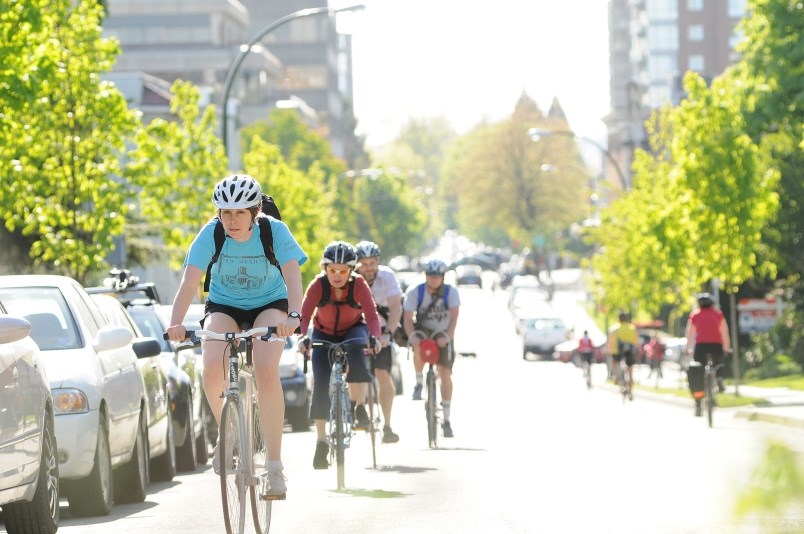The City of Burnaby is reporting largely positive feedback on the key goals and policies proposed for a city-wide transportation plan after more than 400 survey responses and 15 stakeholder meetings.
In February this year, city council approved “draft targets, big moves, policies and networks” proposed by staff to lay the foundation of the transportation master plan, and city staff have since consulted the public and stakeholder groups on the matter.
Coun. Pietro Calendino, chair of the planning and development committee, said that while there were questions about how the plan will be funded and whether residents could stomach related tax increases, there was also a sense of responsibility that work needs to be done, particularly around climate change.
The draft targets include seeing zero deaths or serious injuries in the city’s transportation network, massively increasing transit and active transportation in the city and achieving zero emissions from transportation by 2050. According to the city’s report, those targets received 75% support or strong support from survey respondents.
Among the comments, staff note questions about whether the targets are achievable, and some survey respondents wanted to see a timeframe for the zero-deaths target.
Respondents also said they would like to see the goals tracked and publicly reported for transparency.
The “big moves” proposed in the plan include implementing street standards for all areas of the city, encouraging active transportation through pedestrian infrastructure, completing the core of a cycling network by 2030, encouraging public transit through amenities and increased service, encouraging sustainable transportation for commercial deliveries and seeing no increase in total driving kilometres by 2050.
The city has proposed 36 policies for achieving those six big moves, and staff said each of those six topics received over 70% support or strong support from survey participants.
Among those measures, respondents offered support for adding mobility pricing, implementing bus priority measures (such as bus lanes), expediting building the cycling network, making the cycling network accessible to all ages and abilities, and improving accessibility throughout the city.
Finally, the city noted generally favourable responses to the draft network maps for various modes of transportation, including walking and accessibility (75%-plus support or strong support); public transit (75%-plus); cycling (75%-plus); land use, public realm and transportation (60%); goods and services movement; and driving (50%).
Staff said there were several suggestions for amendments to the draft networks, while some respondents sought more information.
Follow Dustin on Twitter at @dustinrgodfrey
Email [email protected]



